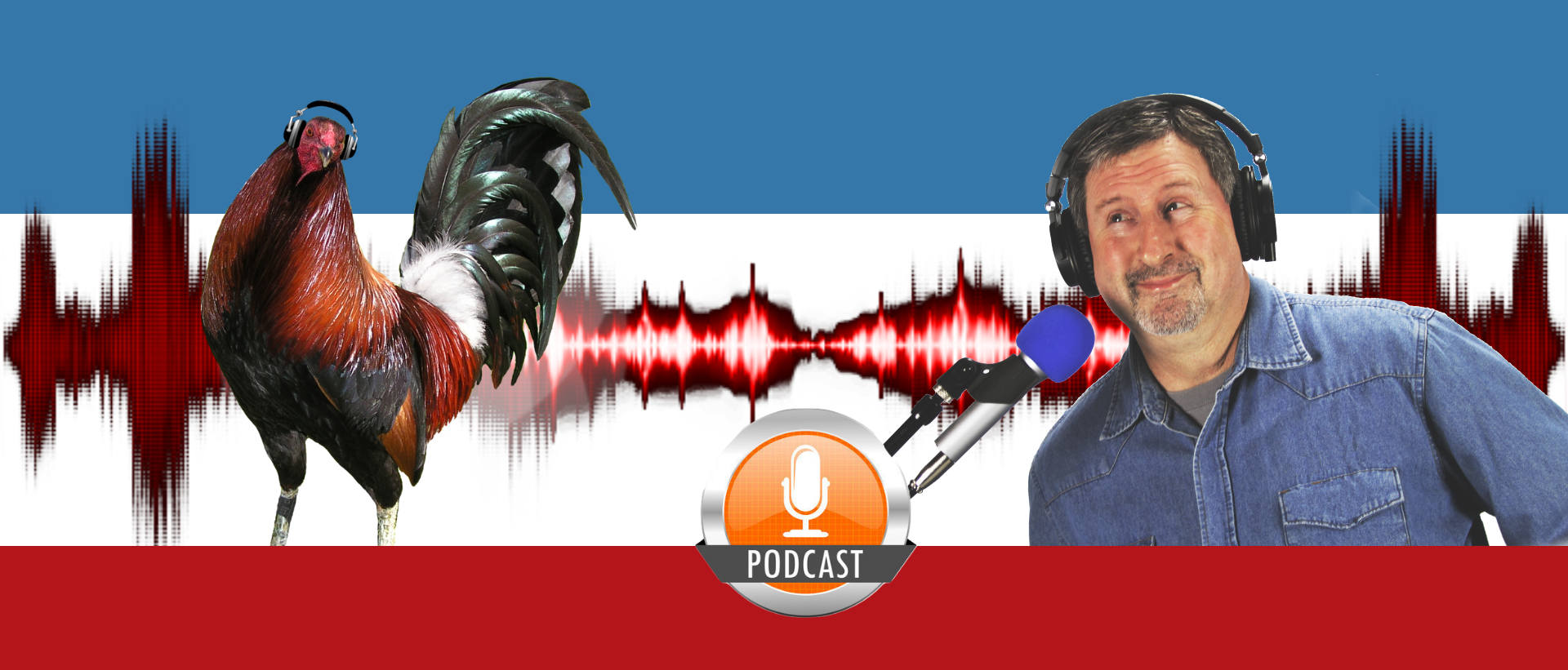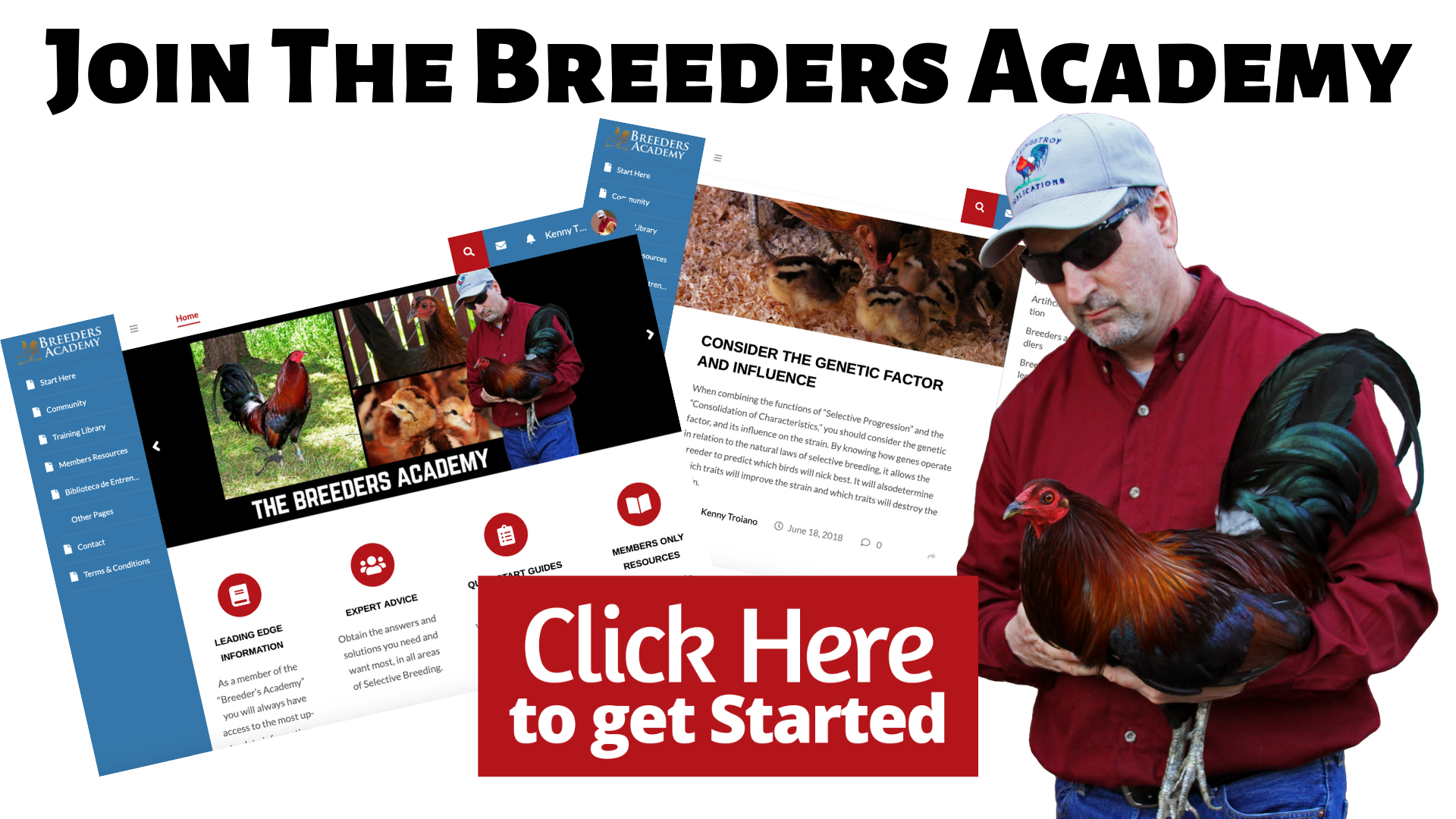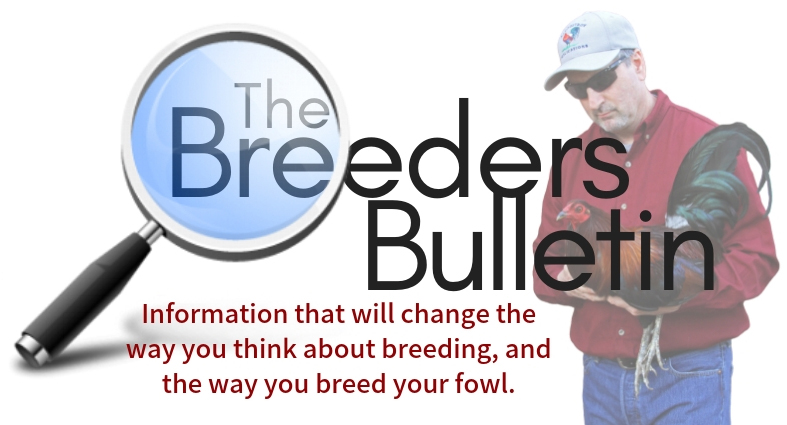Today we talk about
HOW TO SELECT YOUR BROOD FOWL
A simple step by step checklist of what to look for
But, First, a quick breeding tip
If we look at the way we select and breed our fowl, the most successful breeders are those that stay try to emulate Mother Nature. In fact – Charles Darwin used Artificial Selectionto prove his theory of Natural Selection.I say we should emulate the process of natural selection when breeding our fowl. For instance – Hatch as many offspring as possible, but cull hard
- In nature, there are more offspring born than will ever survive. This ensures that only the fittest are able to pass their genes to the next generation.
- Nature does not spare the weak
- If you select the healthiest – strongest and most desirable – in time the strain will evolve.
HOW TO SELECT THE PROPER BROOD FOWL
I’m asked by many breeders – “how do I select my brood fowl?” Well, here is my basis checklist of how I select my cocks and hens for the brood pen. This is a method that can be used anytime you are examining your fowl.
My 5 Stage Selection Process
- The first thing I look for is evidence of good genetics and purity of blood. It is important that the bird is a good representative of the breed.
- I call this “stage one.”
- I will do this by looking over all my available birds. It is at this time that I decide which birds I will examine and which ones I will not examine.
I then move to “stage two.” This is where I look for obvious defects, such as:
- Crooked toes, duck toe, or squirrel or wry tail, or anything that might catch my attention as being a defect or fault
- They must have good legs and feet, and proper control of their tail region
- They must show great refinement
Now, “stage three.” I then look to the overall shape and feather plumage.
- He must have good conformation of body and good carriage.
- American Games have a particular shape, one that is important to his overall form and function.
- must have the proper slope and length of back, and good angulation of the legs and tail. He must also hold his head up with pride.
- I then move on to his color and the condition of his plumage. His feather color must be sound and glossy.
- It must also be elastic and full of bloom, not soft, thick, or fluffy, as is often seen in inferior birds.
Once I am happy with what I see, I then move to“stage four.”At this point I will take the bird out and handle it. This is important. By handling the bird, I will find details of their form that cannot be found just by looking at them from a distance. To begin with:
- I look for cocks that are clever in the hand – but are not mean or flighty. This is true for the hens as well.
- The first thing I look for is a good eye, one that has a healthy pupil and is not sunken around the eye socket. Many breeders miss this part. At this point, I look for an eye with the proper color, and that both eyes are alike. They must have large fierce eyes that are uniform and consistent, whether it be red or dark.
- Moving on, I will examine their form and structure.
- Conformation of body is very important, for a badly shaped bird should never be bred. Once again, this cannot be seen without handling the bird.
- It is my opinion that a breeder has failed if he or she has not handled all the promising birds. It is through handling that I am able to examine their form and structure completely and properly.
- This brings us to the next point of the examination, his body. He must be light weight but firm in flesh. I like to use the term “corky” to describe this. In this case, they are hard and full but light weight like a cork.
- I then look for soundness of the keel bone. It should be neither deep nor crooked. Their bodies should roll easily in my hands.
- I will then turn them around in my hands and check-out their back. They must have a back that is flat and shaped like a heart. Their tails should be in line with their spine.
- Their plumage must be firm as well. I look for long, strong wings that contract well when spread out and released. There must not be any broken feathers; all primaries and secondaries should be sound and of proper color.
- They must also have full control of their tails. If I move them about, their tail should react as though balancing themselves.
- As I move them about, I look for a strong neck and a sound muscular system throughout the body and legs.
The last thing I look for is proper balance and proper footwork.This is “stage five” of my examination. When I drop the bird in the drop-pen, I watch the way they land.
- I look for a bird that has good balance as they touch the ground.
- They should never be clumsy footed.
- Good balance and surefootedness promotes proper form and function.
Once I finish examining each bird in consideration, I will be compare each bird to the others. I will then place them in the order of their excellence.
- I will grade them “A,” “B” or “C”.
- At this point I am looking for the one who is the best representative of my ideal bird.
- I will breed the A’s, and hold onto the B’s as backups, and cull the C’s.
If they have passed all five stages of my examination, then and only then will they become a candidate for breeding. It is at this point that I am confident that all the fowl I have selected for breeding are good representatives of my strain and should be perpetuated. These birds are protected, their blood preserved and perpetuated.


